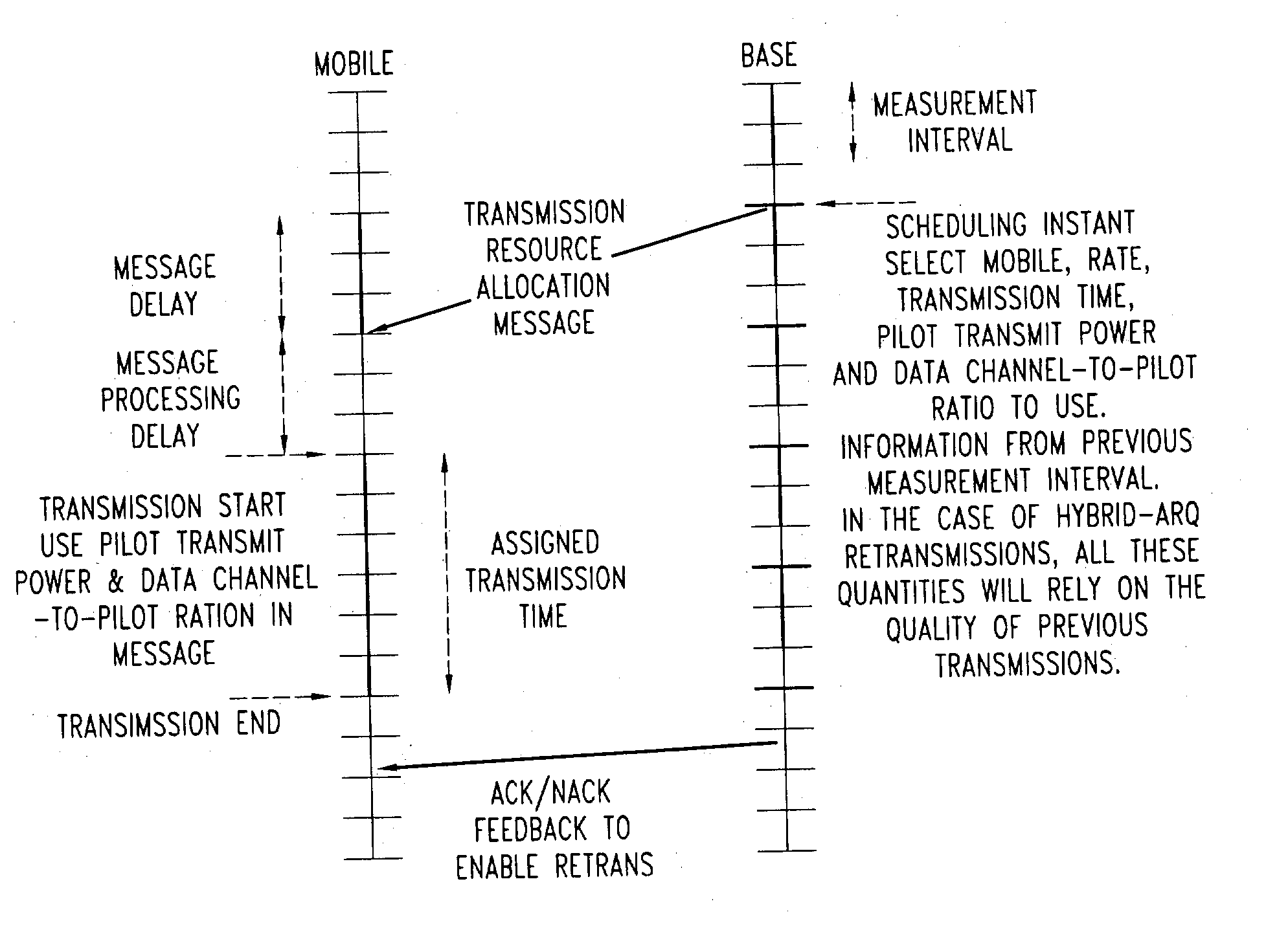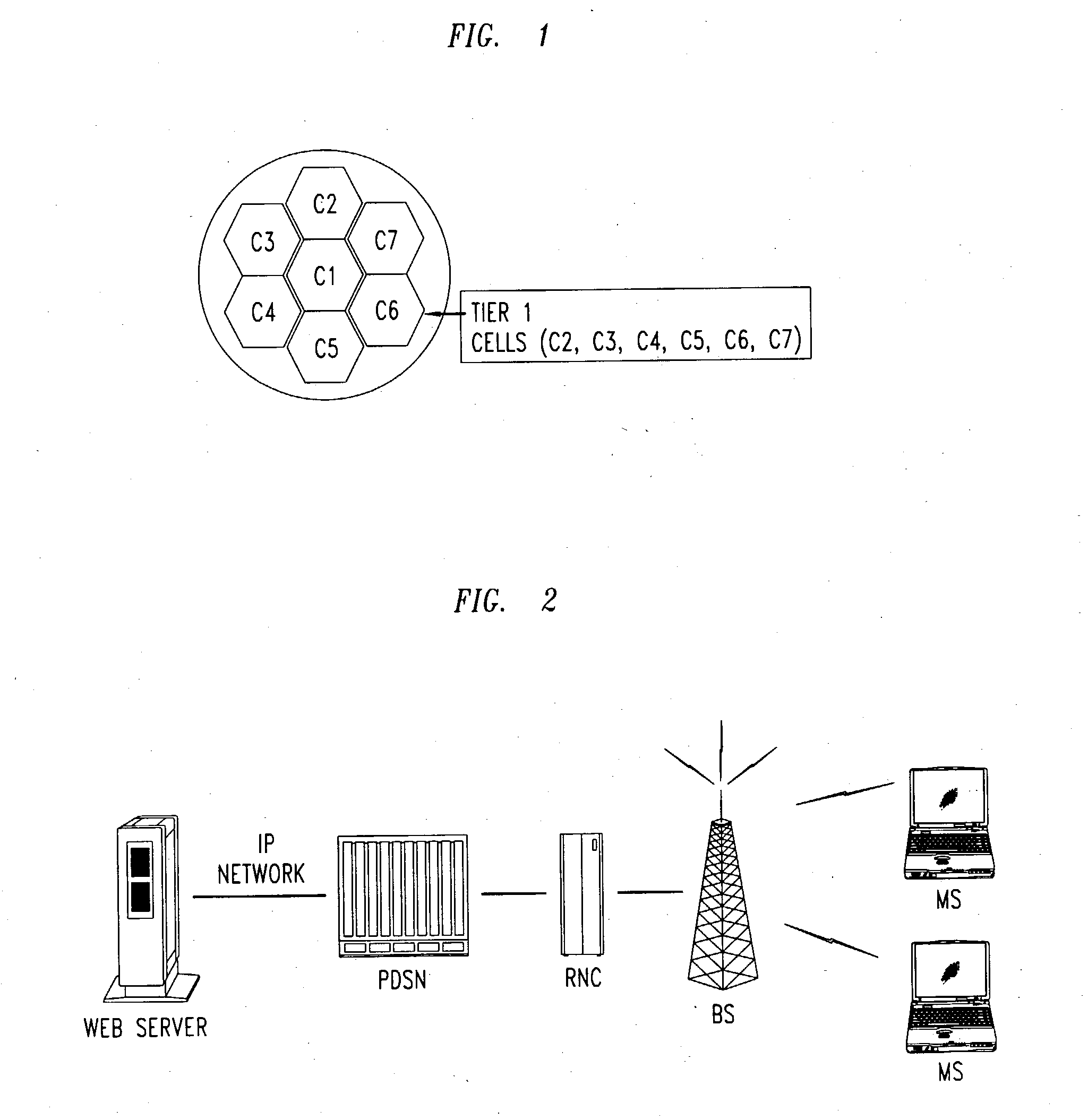Method for improving capacity of a reverse link channel in a wireless network
a reverse link channel and wireless network technology, applied in the field of wireless communication networks, can solve the problems of deteriorating the quality of the received pilot channel signal, the interference of the pilot channel of each of the users, and the interference of the received signals
- Summary
- Abstract
- Description
- Claims
- Application Information
AI Technical Summary
Problems solved by technology
Method used
Image
Examples
Embodiment Construction
FOR PCTP AND DCPR ARE
[0034] Pilot boost / de-boost is picked from a pre-defined set of eight values as shown {-3, 0, 3, 5, 6, 7, 8, 9} dB. This arrangement requires a bit field length of 3 bits.
[0035] DCPR is picked from a pre-defined set of 16 values as shown [-15, 0] in the steps of 1 dB. The above arrangement requires a bit field length of 4 bits. The base station conveys the scheduling decision(s) to the scheduled user(s). For the data users scheduled for a transmission, the resource assignment includes the pilot transmit power or an adjustment factor to the current pilot transmit power to use at the start of the transmission, and the data channel-to-pilot ratio (or the offset from the default value of the appropriate data channel-to-pilot ratio) to use during transmission. After certain propagation and processing delay, the assigned data users start their transmissions. At the start of the transmission, the user transmits the pilot channel at the power level (or adjustment) indic...
PUM
 Login to View More
Login to View More Abstract
Description
Claims
Application Information
 Login to View More
Login to View More - R&D
- Intellectual Property
- Life Sciences
- Materials
- Tech Scout
- Unparalleled Data Quality
- Higher Quality Content
- 60% Fewer Hallucinations
Browse by: Latest US Patents, China's latest patents, Technical Efficacy Thesaurus, Application Domain, Technology Topic, Popular Technical Reports.
© 2025 PatSnap. All rights reserved.Legal|Privacy policy|Modern Slavery Act Transparency Statement|Sitemap|About US| Contact US: help@patsnap.com



